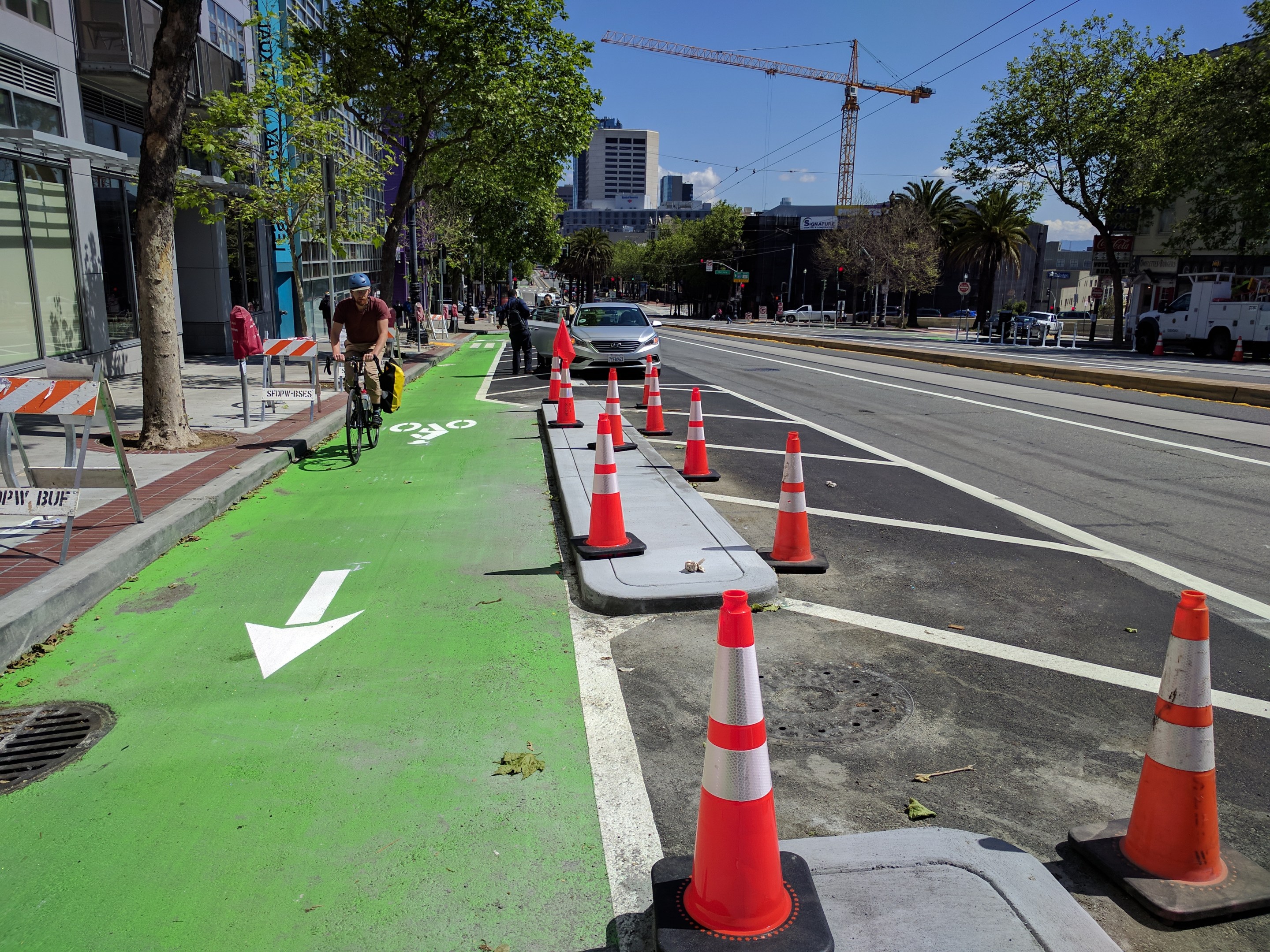Note: Metropolitan Shuttle, a leader in bus shuttle rentals, regularly sponsors coverage on Streetsblog San Francisco and Streetsblog Los Angeles. Unless noted in the story, Metropolitan Shuttle is not consulted for the content or editorial direction of the sponsored content.
The paint was literally still drying on the inbound side of the new protected bike lane on Upper Market this morning. An SFMTA crew was out putting the finishing touches on the lane, as seen below. Both sides are now protected by long stretches of concrete curb (as seen in the lead image). Cycling the stretch from Octavia to the start of the Wiggle is already a much calmer, safer experience.
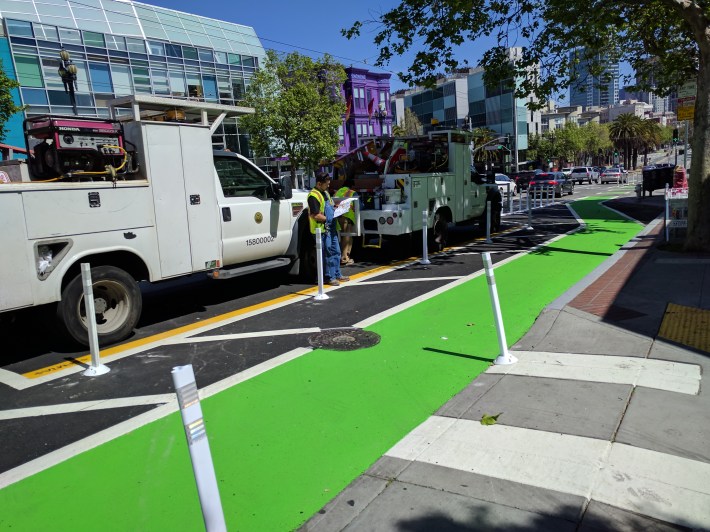
SFMTA's design also seems to have solved the loading problems. Streetsblog watched as an Uber did something almost unimaginable--it stopped in a legal loading zone and discharged passengers without blocking the bike lane. The plastic bollards and designated loading areas saw to that, as seen below with these two delivery trucks.
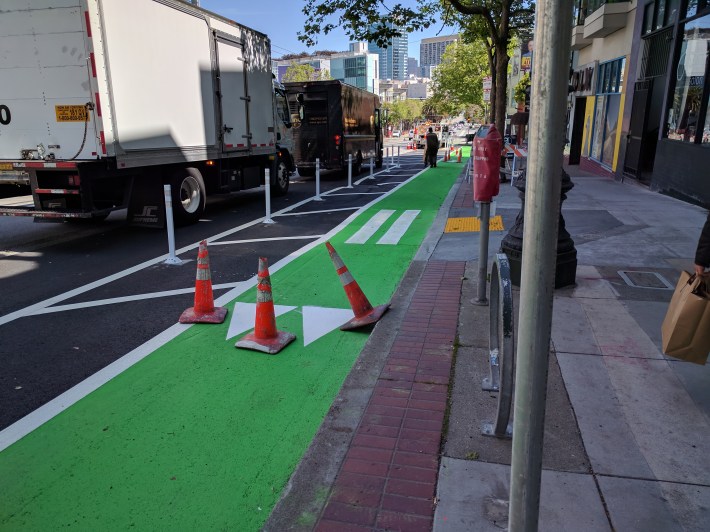
Yes, deliveries had to travel a little bit farther by hand truck, but they managed--and, in fact, the drivers seemed pretty happy about the more orderly street and system. The boxes of booze seen below got where they needed to go.
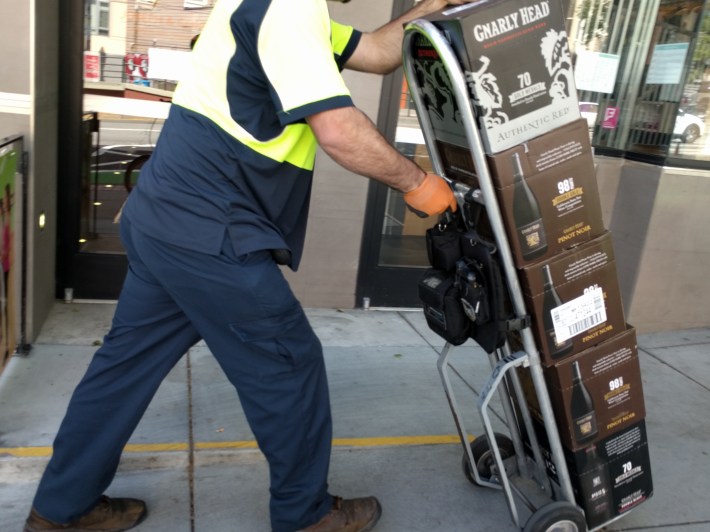
Advocates from the San Francisco Bicycle Coalition and the people-protected bike lane protests can be proud of finally raising enough momentum to push through the bureaucratic morass that tied up the Upper Market project for so long.
The design seems to function well, but there's still room for improvement. As seen below, the intersections don't really work and go against ideal, Dutch-style designs. At the intersection with Laguna, for example, the bike lane is squeezed in closer to automobiles at exactly the point when the separation should be increased. Bike boxes are not a great solution, considering they are routinely violated by motorists. A ramp could have continued the bike lane straight up over the bulb-out to create a partially protected, more Dutch-style intersection. Poor intersection design has been an ongoing problem that advocates have complained about before.
"There are so many treatments that you could pull from streets of Amsterdam, for instance. But we don't want to be in the position that the city can't try new things because advocates jump on them for the imperfections that come along with early iterations," said Chris Cassidy, spokesman for the San Francisco Bicycle Coalition.
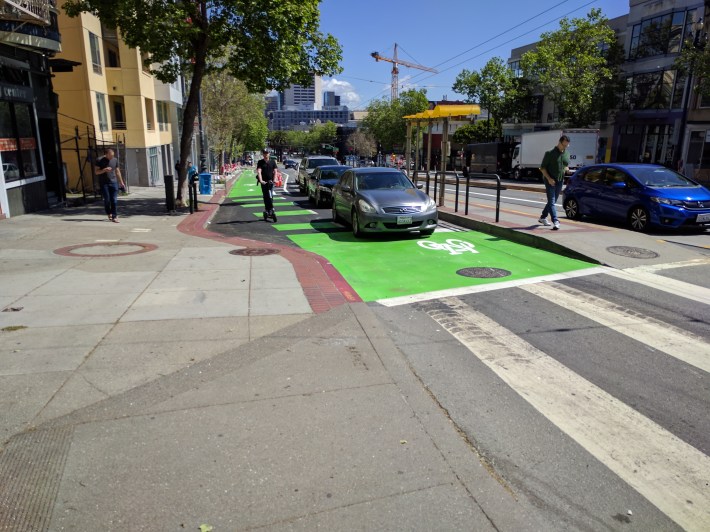
SFTMA also recently rolled out a protected bike lane on Turk (it's not officially open, but it's mostly complete). As previously reported, Turk has electric trolley bus wire over the right-most travel lane and a parking lane against the right-side curb. The fire department complained that the trolley wire, if a parking-protected bike lane was installed on the right, would limit ladder truck access to adjacent buildings, a concern that some thought was misguided. Either way, SFMTA opted for a left-side running bike lane on Turk to avoid the issue.
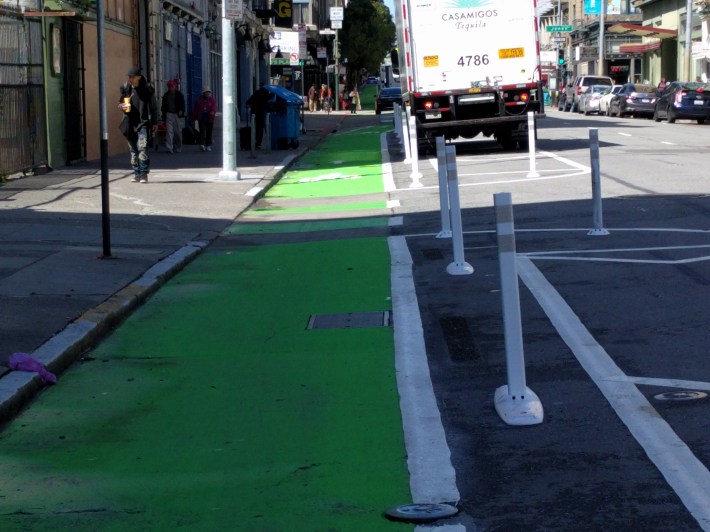
Although it can be argued that any protected bike lane is better than nothing, during Streetsblog's survey this morning, this was clearly a counter-intuitive and potentially hazardous design. The biggest flaw becomes apparent, once again, at intersections. Without phased bike signals at turns, cyclists now have to worry about getting left-hooked instead of right-hooked--why would a motorist expect something to be passing on the left when the motorist is in what appears to be the left-most travel lane? There's a mixing zone, and presumably motorists are supposed to merge into the bike lane before making a left to prevent this from happening, but they don't; the truck in the image below, for example, cut suddenly and sharply across the bike lane. It would be incredibly easy to catch a cyclists off guard in a situation such as this, with tragic results.
This is the danger with bi-directional, counterflow, or left-side bike lanes--intersections have to be extremely well thought out. Instead, this design doesn't even continue the green bike lane paint across the intersection.
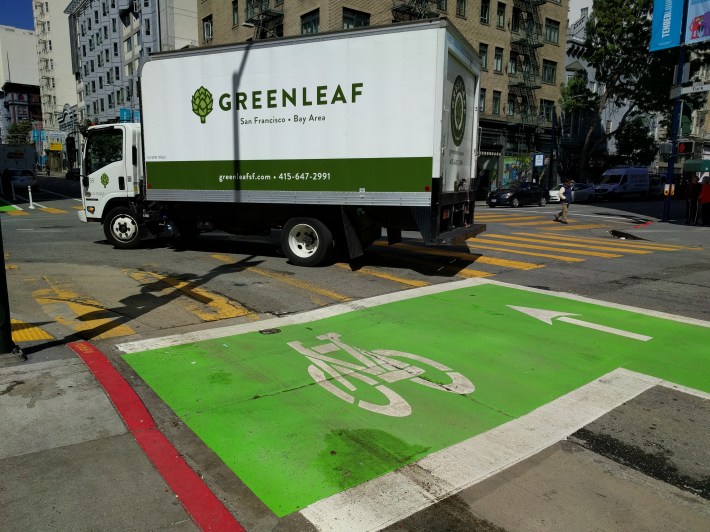
Meanwhile, to maintain curbside loading at the Curry Senior Center at Leavenworth and Turk, SFMTA has the bike lane suddenly jog right and then left again, crossing paths with loading cars. During the jog, the bollards stop to let cars cross the bike space to load curbside. It probably would have made way more sense to add a raised crosswalk and something akin to a bus-boarding island for seniors, rather than making cyclists and cars dipsy-doodle through the same space.
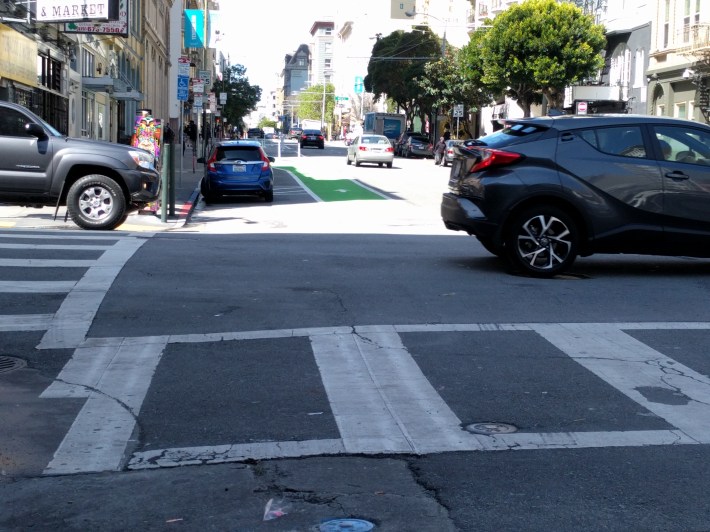
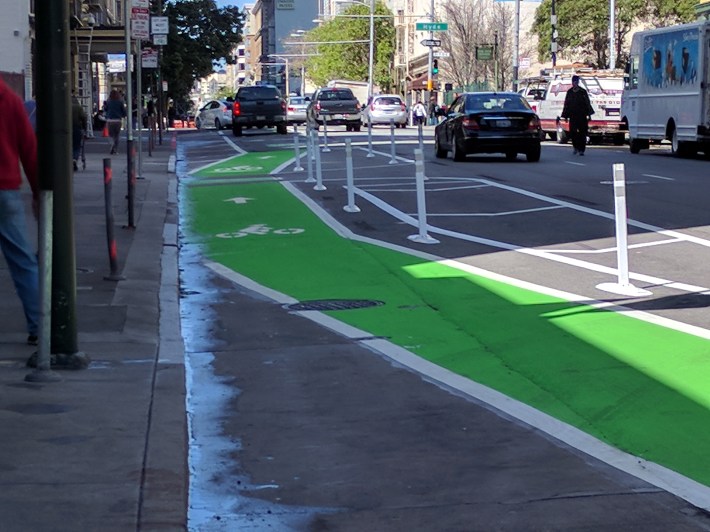
And then, at the intersection with Larkin, we see an example of why it's not okay to shrug off construction crews that don't make allowances for bikes. As seen below, the bike lane dumps cyclists into this as they cross the intersection--again, there is no paint actually in the intersection. With nowhere to go because of the construction barriers from a building site, I ended up crossing two lanes and shifting back to the right side of the road.

And then, on the last block of the partially protected, serpentine, left-handed bike lane on Turk, in front of the federal building, the lane was blocked by Homeland Security, right in front of open curb space. Of course, by then I was riding on the right and ignoring the bike lane. I crossed the street on foot and went back to take this picture:
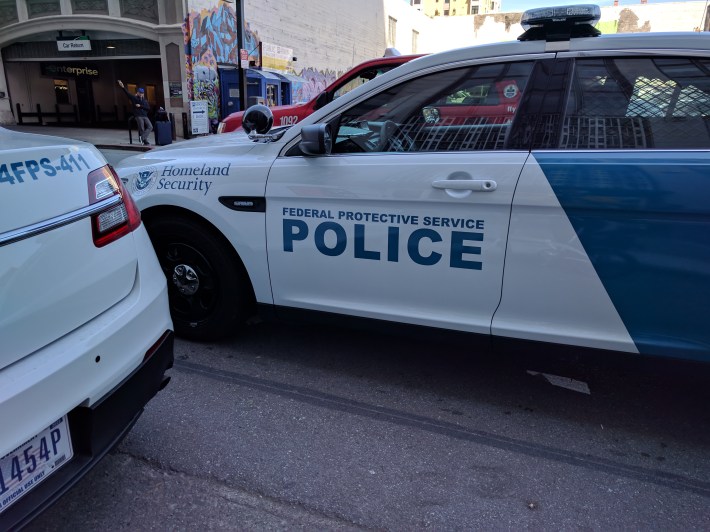
It's good to see such progress on Upper Market. And some of the issues brought up about Turk, hopefully, will be addressed when the last bit of work is done, although the Bicycle Coalition is not aware of any improvements coming in the near future (the Turk lane's official ribbon cutting is Thursday, April 26, at 9 a.m.)
"The near-term improvements on Turk were informed by compromise, but this is the best protected bike lane that we could see for now--it's not necessarily the bike lane that will be there a year or two or five or ten years from now," said the SFBC's Cassidy. "The SFMTA deserves credit for navigating stakeholder concerns to deliver the Tenderloin's first protected bike lane."
Fair enough, but to Streetsblog, the solution for Turk was to eliminate parking on the right side of the street to create a protected bike lane in what is now the parking lane--wide enough so fire trucks could use it in an emergency. That would have maximized safety for cyclists and maintained access for fire trucks, the senior center, and everyone else--with the exception of people who think the city is obligated to provide car parking and loading on both sides of every street.
